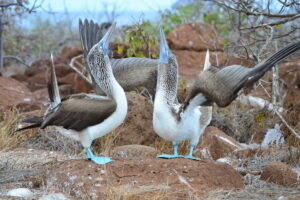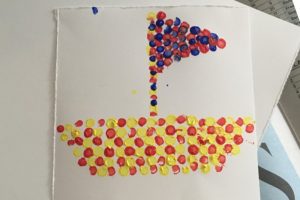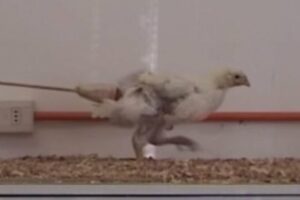
GUEST BLOGGER LESLIE BULION
Each of my science poetry collections is organized around one big idea or theme and then stitched together with related thematic threads. The big idea in Amphibian Acrobats asks the science question: what are the identifying characteristics of an amphibian? A related thematic thread in this poetry collection highlights the physical, behavioral and adaptive differences between the three taxonomic orders of amphibians: frogs (toads included, since they’re frogs!), salamanders, and caecilians. When I communicate cool science stories through poetry, I sift through reams of research to share one or two interesting ideas using a handful of carefully chosen words and phrases.
Objective: Students will develop an understanding of frog/amphibian biology and demonstrate mastery through a poetry-writing exercise that includes practice with synonyms and rhyme. (Standards: reading, writing, speaking)
What are frogs?
After reading Amphibian Acrobats, ask students, working in pairs, to create a list of general amphibian and frog-specific characteristics. Use information from Amphibian Acrobats and students’ own knowledge. Students may find help with physical characteristics using visual references from the book. Endpapers, relative sizes chart on pages 58-59, and frog/toad poem illustrations throughout Amphibian Acrobats provide great clues. Suggestions include frogs have four legs, a big mouth, a head, frogs lack tails, frogs have backbones). Students may already know life history and behavior characteristics: frogs hop, frogs eat bugs, frogs lay eggs, frogs usually hatch as tadpoles, and frogs need to stay moist. They may find additional information in the science note “Amazing Amphibians” and its “Frogs” section on pages 6-7. Individual frog/tadpole poems and the accompanying species notes on pages 8-35, and page 54 have valuable information.
For additional help and inspiration students can visit:
- The American Museum of Natural History’s “Frog Fun Facts
- University of Washington’s Burke Museum frog page

Compile a class-wide “Frog Characteristics” master list
Share student lists aloud as you create a classroom reference list of frog characteristics. It will help to keep each list item/phrase short. For example: four legs, big mouth, head, no tails, jump, eat bugs, etc. Students will use these words and phrases as inspiration and lexicon to create frog poems.
Simple wordplay
Rhyme: working as a class group, choose an action word from your frog characteristics master list (such as hop) and brainstorm a class list of rhymes (bop, crop, pop, drop, etc). Encourage students to think of the alphabet for beginning sounds, or consult a rhyming dictionary such as rhymezone.com. Be sure to say each suggested word out loud. Students may suggest partial rhymes which are also fun, as is free verse, since some poems use rhyme and some don’t.
Give students this first line (or one of your own): “Toads have short legs, used for hopping,” and use your class “hop” list to brainstorm a second, rhyming line. Remind students that for this exercise science poems should make sense, though nonsense poems are fun, too!
Synonyms: sometimes a word from a researched master list is not inspiring! Working as a class group, brainstorm a list of synonyms for “hop, ” that might include leap, jump, spring, etc. Finding synonyms is a technique students can use as they work on their own poems.
Write a frog poem
- Ask students, working again in pairs, to create a short poem using rhyming couplets (“Showstoppers’ Farewell” p. 44) or another form of their choosing, using what they have learned (and brainstormed through wordplay) about frogs.
- Depending on grade level and prior poetry exposure, students may discuss/include other poetic devices, including alliteration, metaphor, internal rhyme, imagery.
- Ask students to share/perform their poems aloud.
This group science poetry activity can precede student-created, illustrated poetry projects about a particular frog (or other amphibian). The activity can also serve as a way to demonstrate mastery of a current curricular science concept.
After students create their frog poems, share this YouTube music video created by the California Academy of Sciences. It’s called 7000 Kinds of Amphibians and full of super-fun information!
Bonus
Discuss the difference between the video’s phrase “blood runs cold” and the term “ectothermic,” which is defined in Amphibian Acrobats on p. 7.

Leslie Bulion creates award-winning science poetry steeped in hands-on learning experiences, field observations, research, humor and imagery in a variety of poetic forms. Her illustrated collections invite readers on multi-layered science adventures exploring birds, sea creatures, insects, entire ecosystems, and even human anatomy. Leslie’s graduate science background and her years as a school social worker inform both her poetry and her science-infused novels for young readers. Check out her newest, Kirkus-starred, funny science poetry collection, AMPHIBIAN ACROBATS (Peachtree: March 1, 2020)!
Find Leslie here: www.lesliebulion.com | Facebook https://www.facebook.com/leslie.bulion | Twitter https://twitter.com/LeslieBulion | Instagram https://www.instagram.com/lesliebulion/








Leave a Reply
Your email is safe with me.